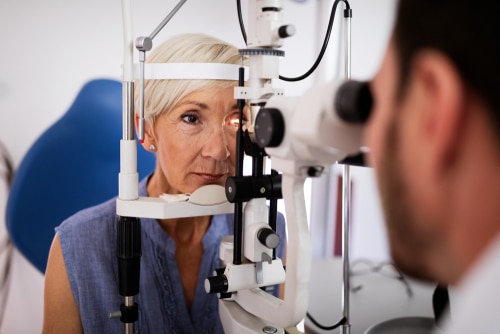
Glaucoma is a serious disease that affects millions of people worldwide. It causes damage to your optic nerve, the part of your eye that sends visual information to your brain.
Glaucoma is one of the leading causes of blindness. If it’s detected early, glaucoma can be treated before it causes irreversible damage.
If you have any risk factors for glaucoma, your eye doctor may recommend that you have more frequent eye exams to ensure you are not at risk for developing the eye condition or any vision loss. Keep reading to learn eight risk factors for glaucoma!
1. Family History
One of the biggest factors affecting your likelihood of developing glaucoma is your family history. Glaucoma can run in your family, meaning you can inherit an increased risk at birth.
If any of your family members have had glaucoma, be sure to inform your eye doctor. They may recommend more frequent eye exams.
2. Age
Glaucoma is a common age-related ocular condition, so age is a significant risk factor. While glaucoma can occur at any age, once you reach forty, your risk increases. It continues to increase as you get older.
3. Ancestry
If you are of African, Hispanic, or Asian descent, you have a heightened risk of developing glaucoma. It is possible that you may develop glaucoma at an earlier age than typical. Glaucoma can also be more severe.
4. High Eye Pressure
When you have glaucoma, fluid usually builds up in your eye. This raises the pressure of your eye, often referred to as intraocular pressure, or IOP.
Elevated IOP can lead to damage to the optic nerve. So, if you have high eye pressure, typically called ocular hypertension, you may be more likely to develop glaucoma.
5. Farsightedness or Nearsightedness
Studies have suggested a link between farsightedness or nearsightedness and a person’s risk of glaucoma. This is especially true if there is a high degree of refractive error.
Farsightedness has been linked to angle-closure glaucoma, in which there is a sudden blockage in the eye’s drainage network. Nearsightedness has been linked to open-angle glaucoma, in which this blockage occurs gradually.
6. Certain Conditions and Medications
Other non-ocular conditions can put you at an elevated risk of developing glaucoma. This includes diabetes, chronic migraines, heart disease, and high blood pressure.
In addition, long-term use of steroid medications can increase your risk.
7. Trauma to the Eye
Traumatic glaucoma occurs as a result of eye injury. Sports-related injuries are common examples of this.
Any injury to the eye, whether blunt or penetrative, can affect its ability to drain fluid. Glaucoma can develop years after a traumatic injury.
8. Thin Corneas
The thicker your corneas, the less risk you have of developing glaucoma. Thin corneas can leave your optic nerve more susceptible to damage. When you have thin corneas, glaucoma can also progress more quickly. The only way to know whether you have thin corneas is to have your eyes examined by your doctor.
Do any of these risk factors apply to you? Don’t let the “sneak thief of sight” diminish your vision. Schedule an eye exam at Rosenthal Eye Surgery in Long Island, NY, today!
